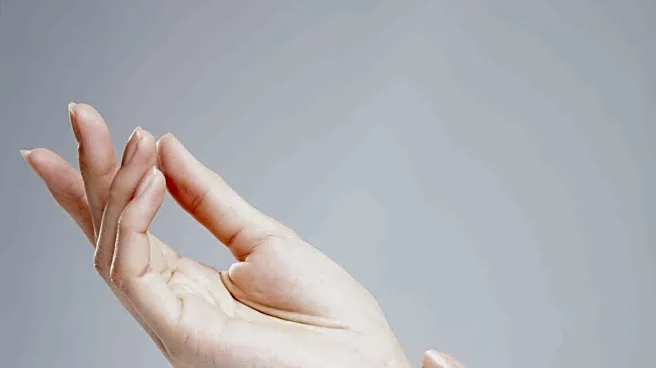What's Happening?
Northwestern Medicine, in collaboration with Ukrainian physicians, has discovered a novel use for Botox in alleviating phantom limb pain among Ukrainian war amputees. The study, conducted from 2022 to 2024,
involved 160 amputees at two hospitals in western Ukraine. Approximately 20% of these patients received botulinum toxin injections around painful nerve endings, in addition to standard medical and physical therapy. The results showed a significant improvement in phantom limb pain, with the Botox group experiencing a 40% reduction in pain after one month, compared to a 10% improvement in the control group. However, the effects were temporary, as the benefits diminished after three months. The study, published in the Archives of Physical Medicine and Rehabilitation, suggests that Botox could be a powerful short-term tool for managing post-amputation pain.
Why It's Important?
The findings have significant implications for the treatment of phantom limb pain, a common issue among amputees. With over 2 million Americans living with limb loss, this research could pave the way for new pain management strategies in the U.S. The use of Botox, typically known for cosmetic applications, in a medical context highlights its potential to improve the quality of life for amputees by reducing pain and enhancing prosthetic use. The study also opens avenues for further research into long-term pain management solutions, potentially benefiting a wide range of patients suffering from nerve-related pain conditions.
What's Next?
Future research will focus on the long-term effects of repeated Botox injections and their impact on residual limb and phantom limb pain. The research team plans to conduct a follow-up study over a year, examining the relationship between pain relief and factors such as anxiety, depression, and quality of life. This could lead to more comprehensive treatment protocols for amputees, potentially incorporating Botox as a regular component of pain management strategies. Additionally, the technique may be explored for other nerve pain conditions, such as shingles and carpal tunnel syndrome.
Beyond the Headlines
The study's implications extend beyond immediate pain relief, as it may influence the broader medical community's approach to treating nerve pain. The innovative use of Botox could inspire similar research in other areas of pain management, challenging traditional methods and encouraging the exploration of unconventional treatments. This development also underscores the importance of international collaboration in medical research, as the partnership between Northwestern Medicine and Ukrainian physicians demonstrates the potential for global cooperation to address complex health issues.












